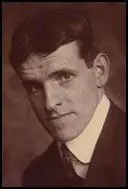Jack Butler Yeats

Jack Butler Yeats, the fifth child and youngest son of the painter, John Butler Yeats and the brother of the poet W. B. Yeats, was born in London on 29th August 1871. Educated in County Sligo he moved to England where he studied art under Frederick Brown at the Westminster School of Art. As a student he had his drawings published in Vegetarian, Ariel and Paddock Life.
His biographer, Bruce Arnold, has pointed out: "Yeats, however, found nothing strange about studying in a number of institutions, but he did find quite uncongenial the straitened circumstances at home. These included the burden of having to contribute to the family income. He escaped into the world of his own art and into the entertainment world of the Buffalo Bill Cody shows at Earls Court, near one of the houses in which the family lodged, and drew cowboy subjects obsessively. While an art student he witnessed the efforts of his brother and two sisters to earn money to keep the family together."
Yeats wrote and illustrated stories for books and magazines. In 1894 he produced the first cartoon strip version of Sherlock Holmes. He contributing to several newspapers and journals including the Manchester Guardian, The Daily Graphic, The Sketch and Cassell's Saturday Journal. During this period he was influenced by the work of Phil May.
In 1897 Yeats held his first exhibition at the Clifford Galleries. The art critic, P. G. Konody, argued: "Quite apart from the exquisite humour of these sketches, there is another reason which makes them quite remarkable and worthy of attention. They show an astounding capacity for grasping and retaining the impression of certain short moments".
Yeats work also appeared in Punch Magazine, where he used the pseudonym, W. Bird. This resulted in Cyril Bird using the name "Fougasse". R.G.G. Price, the author of A History of Punch (1957) has argued that "his humour was irrational, wild and precise, his drawings much criticized as incompetent. He broke all the rules and his genius still draws readers back to volumes in which nothing much else appeals to them." Yeats also edited and illustrated two monthly publications, Broadsheet (1902-03) and Broadside (1908-15).
In 1913 the ideas of Robert Henri, the leader of the Ash Can School, inspired the International Exhibition of Modern Art (the Armory Show) held in New York City. Held at the 69th Regiment Armory, the exhibition included over 1,300 works, including Yeats' The Circus Dwarf (1912). The exhibition, held between 17th February and 15th March, received around 250,000 visitors. The art critic, Alexander J. Finberg, pointed out: "The people Mr Yeats is interested in are a rough, hard-bitten, unshaven, and generally disreputable lot of men. His broken-down actors practising fencing, his Circus Dwarf… are subjects no other artist would have chosen to paint".
Yeats, a supporter of the Irish Republican Army, painted Bachelor's Walk: in Memory (1915). The painting shows a flower girl placing flowers on the spot in the street where a person was shot down by British soldiers who had unsuccessfully tried to prevent the landing of arms. Later political works included Communicating with Prisoners (1924) and The Funeral of Harry Boland (1922).
Bruce Arnold has pointed out: "Yeats sided with modernism, which in Dublin in the early 1920s had a distinctive meaning. In the absence of a strong artistic tradition based on academic art the arrival in the city of modernist principles - of abstraction, of a movement that related to European painting rather than to London - was successful. Yeats sided with the artists, led by Paul Henry, who formed the Society of Dublin Painters and became one of their number. He met Oskar Kokoschka, and they became friends. He derided the dominance of Paris and London in artistic life generally."
Yeats was the author of several books including Sligo (1931), The Amaranthers (1936) and The Charmed Life (1938). In 1939 he became the governor of the National Gallery of Ireland. In 1941 John Betjeman and Kenneth Clark arranged for Yeats to have an exhibition at the National Gallery in London.
Jack Butler Yeats died in Portobello Nursing Home in Dublin on 28th March 1957.
